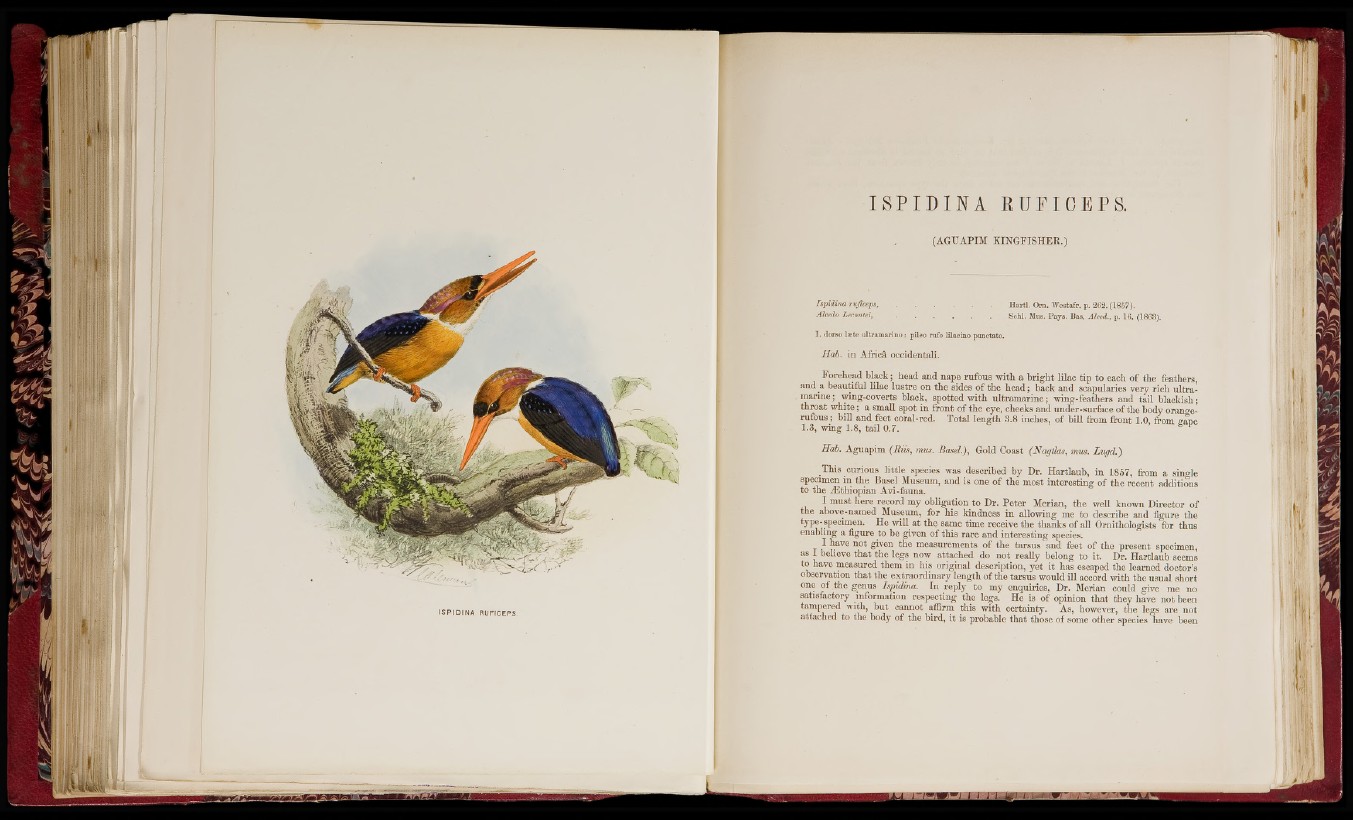
I S P I D I N A R U F I C E P S .
(AGTJAPIM K IN G F ISH E R .)
Ispidina ruficeps...............................................
Hartl. Orn. W'’estafr. p. 262. (1857).
Alcedo Lecontei, . . . . .
Schl. Mas. Pays. Bas, Alced., p. 16. (1863).
I. dorso Isete ultramarino; pileo rufo lilacmo punctato.
Hab. in Africa occidentali.
Forehead b la c k ; head and nape rufous with a b rig h t lilac tip to each o f the feathers,
and a beautiful lilac lu stre on th e sides o f the head; back aud scapularies very rich ultra-
m arin e; wing-coverts black, spotted w ith u ltram a rm e ; wing-feathers and tail blackish-
th ro a t w h ite ; a small spot in fro n t o f th e eye, cheeks and under-surface o f the body orano-e-
rufous ; biU and feet coral-red. Total length 3.8 inches, o f bill from fro n t 1.0, fi-om sajie
1.3, wing 1.8, tail 0.7.
Hab. Aguapim (Riis, mm. B a se l), Gold Coast (Nagtlas, mm. Lugd.)
This curious little species was described by Dr. Hartlaub, in 1857, from a sino-le
specimen in the Basel Museum, and is one o f th e most in terestin g o f the recent additions
to the .'Ethiopian Avi-fauna.
I m u st here record my obligation to Dr, P e te r Merian, tb e well known Director o f
the above-named Museum, for h is kindness in allowing me to describe and figure the
type-specimen. He wiU a t the same time receive the thanks o f ail Ornithologists for thus
enabling a figure to be given o f th is rare and in te restin g species.
I have n o t given the measurements o f th e tarsu s and feet o f the present specimen,
as 1 beheve th a t th e legs now attached do n o t really belong to it. Dr. Hartlau b seems
to have measured them in his original description, y e t it has escaped the learned doctor’s
observation th a t the ex trao rd in a ry length o f the tarsu s would ill accord with the usual short
one o f the genus Ispidina. In reply to my enquiries, Dr. Merian could give me no
satisfactory information respecting the legs. He is o f opinion th a t th ey have not been
tumjicred with, b u t cannot affirm th is with certainty. As, however, the legs a re not
a ttached to the body o f the bird, it is probable th a t those of some other species have been
■!
i ,
if r
' li I .
I iN
li
..ii'
tl'